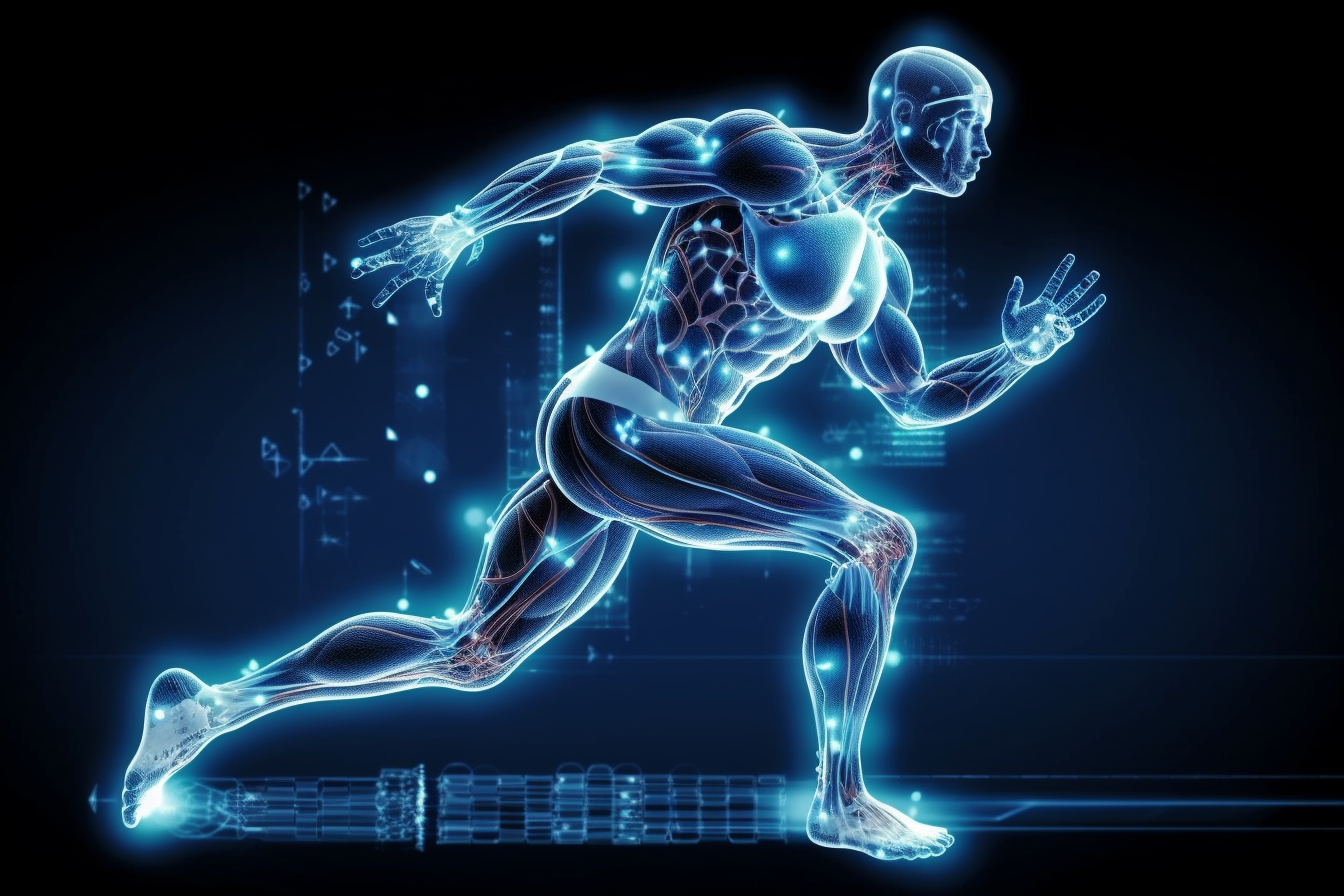Sports science is a field that has been gaining popularity in recent years, as athletes and coaches alike seek to optimize performance through a better understanding of human physiology. At its core, sports science is the intersection of biology and technology, with the goal of improving athletic performance through the use of data-driven insights and cutting-edge technology.
The Role of Biology in Sports Science
Sports science revolves around a profound comprehension of human physiology, encompassing diverse aspects ranging from muscular functioning to energy metabolism. This in-depth understanding allows sports scientists to formulate personalized training regimens and nutritional strategies that cater to the unique requirements of individual athletes.
In the pursuit of optimizing athletic performance, sports scientists harness the power of physiological knowledge. They employ various scientific methodologies to unravel the intricacies of the human body and uncover its physiological responses to exercise. This knowledge serves as the foundation for designing effective training programs and dietary plans that can enhance an athlete’s capabilities.
For instance, a sports scientist may utilize data obtained from a runner’s VO2 max test to determine the ideal training intensity for that particular athlete. VO2 max stands as a quantifiable measure of an athlete’s maximal oxygen consumption during exercise, serving as a significant indicator of aerobic fitness. By analyzing this data, a sports scientist can develop a training regimen tailored to improving the runner’s VO2 max, subsequently bolstering their overall endurance.
The process begins with a comprehensive assessment of the athlete’s physiological parameters, which may include assessing their VO2 max, lactate threshold, and body composition. These evaluations provide crucial insights into an athlete’s current fitness level, strengths, and weaknesses. Armed with this knowledge, sports scientists can formulate a holistic approach to optimize performance while minimizing the risk of injuries.
Training programs devised by sports scientists incorporate a combination of cardiovascular exercises, strength training, flexibility exercises, and sport-specific drills. The intensity, duration, and frequency of these activities are meticulously calibrated to elicit specific adaptations within the athlete’s body. By employing progressive overload, a principle where the training stimulus is gradually increased over time, sports scientists ensure a systematic progression towards optimal performance.
Moreover, sports scientists recognize the vital role of nutrition in fueling athletic performance. They understand the intricate relationship between the body’s energy requirements and the consumption of macronutrients (carbohydrates, proteins, and fats) and micronutrients (vitamins and minerals). Through detailed analysis of an athlete’s nutritional needs, sports scientists can develop personalized dietary plans that optimize energy production, promote recovery, and support tissue repair.
In addition to training and nutrition, sports scientists delve into the realm of sports psychology to enhance an athlete’s mental fortitude and performance. They employ various techniques such as visualization, goal setting, and stress management strategies to optimize an athlete’s mindset and mental resilience. By addressing psychological factors, sports scientists empower athletes to perform at their peak even under immense pressure.
Continuous monitoring and assessment play a pivotal role in the field of sports science. Sports scientists employ cutting-edge technologies such as wearable devices, motion analysis systems, and biochemical markers to track an athlete’s progress and identify areas for improvement. Regular feedback and adjustments to training programs ensure that athletes stay on the path of continual growth and adaptation.
The Role of Technology in Sports Science
In the realm of sports science, while biology remains a crucial aspect, technology emerges as an equally indispensable component. The continuous advancements in technology have paved the way for the collection and analysis of extensive athlete data, encompassing diverse metrics like heart rate variability and sleep patterns. Leveraging this wealth of information, sports scientists can pinpoint areas of underperformance and devise effective strategies for improvement.
An exemplification of technology’s role in sports science is the utilization of wearable devices. Athletes now have the opportunity to don devices such as heart rate monitors, GPS trackers, and accelerometers, allowing them to gather precise data pertaining to their performance during training sessions and competitive events. This accumulated data can subsequently undergo meticulous analysis, facilitating the identification of potential areas where athletes can enhance their capabilities, be it refining running form or optimizing recovery time.
These wearable devices enable real-time monitoring, granting athletes immediate feedback on their performance and physiological responses. For instance, heart rate monitors provide insights into an athlete’s cardiovascular exertion and intensity levels during exercise. This information can then be utilized to ascertain optimal training zones, ensuring that athletes are pushing their limits while avoiding overexertion or injury.
GPS trackers serve as a valuable tool for tracking an athlete’s movement and speed, allowing coaches and sports scientists to evaluate and fine-tune their technique. By analyzing data on running or cycling routes, coaches can identify patterns and pinpoint areas where an athlete can optimize their stride length, pacing, or race strategy. Such insights contribute to refining performance and achieving competitive advantages.
Performance Optimization through Sports Science
The ultimate goal of sports science is to optimize athletic performance. This can be achieved through a combination of training, nutrition, and recovery strategies that are tailored to the specific needs of each athlete. By using data-driven insights and cutting-edge technology, sports scientists can help athletes achieve their full potential.
For example, a sports scientist might work with a basketball player to develop a training program that focuses on improving their vertical jump. This might involve exercises that target the muscles used in jumping, as well as nutritional strategies that support muscle growth and recovery. By using data to track the athlete’s progress, the sports scientist can adjust the training program as needed to ensure that the athlete is making progress towards their goal.
Conclusion
Sports science is a rapidly growing field that is helping athletes and coaches to optimize performance through a better understanding of human physiology and the use of cutting-edge technology. By combining biology and technology, sports scientists are able to develop training programs and nutritional plans that are tailored to the specific needs of individual athletes. The ultimate goal of sports science is to help athletes achieve their full potential, and with the help of data-driven insights and advanced technology, that goal is becoming more achievable than ever before.






